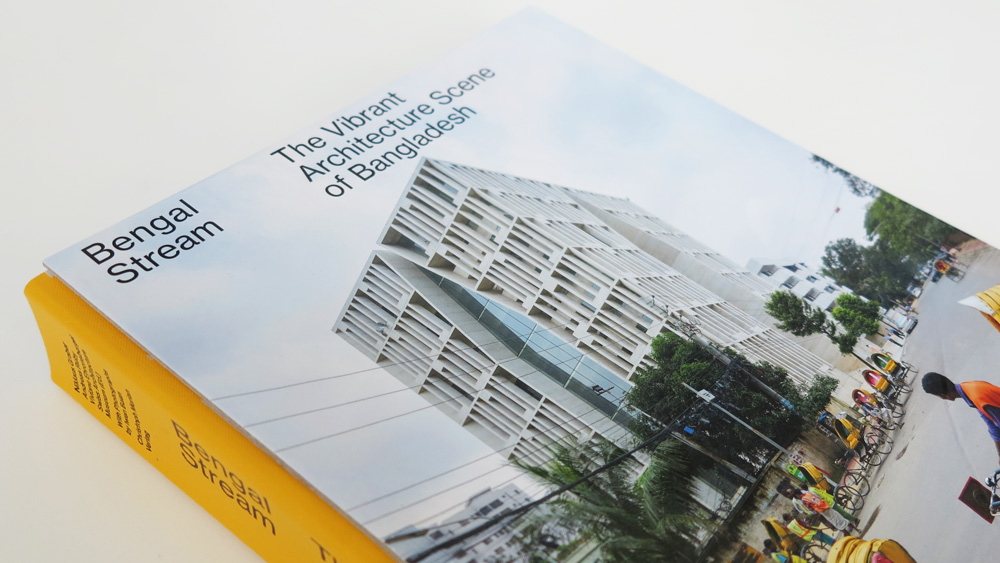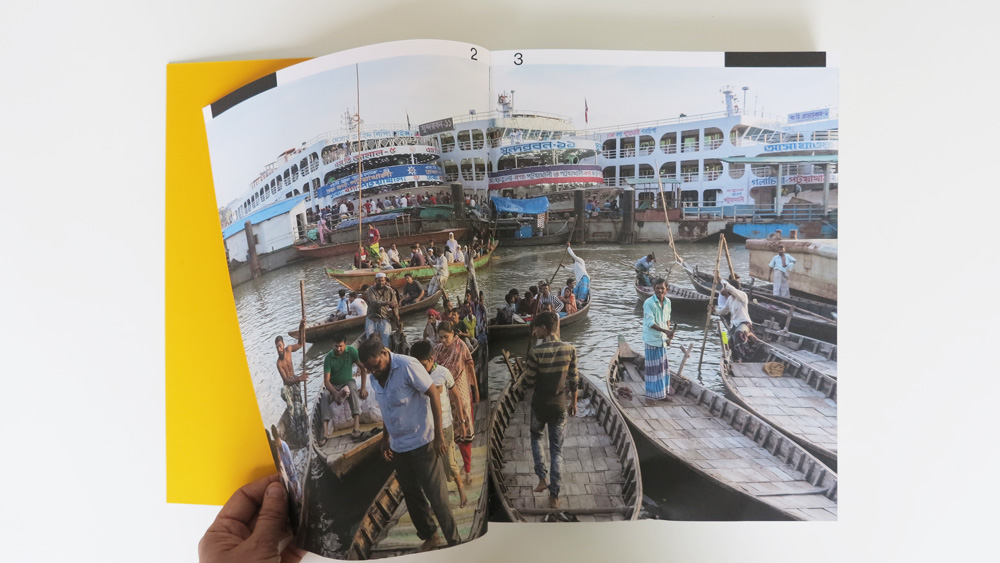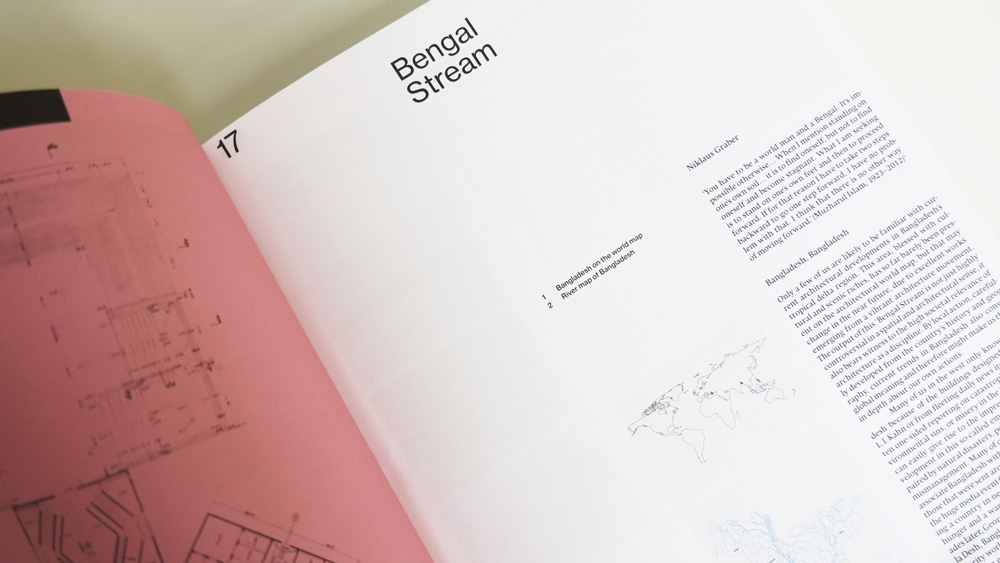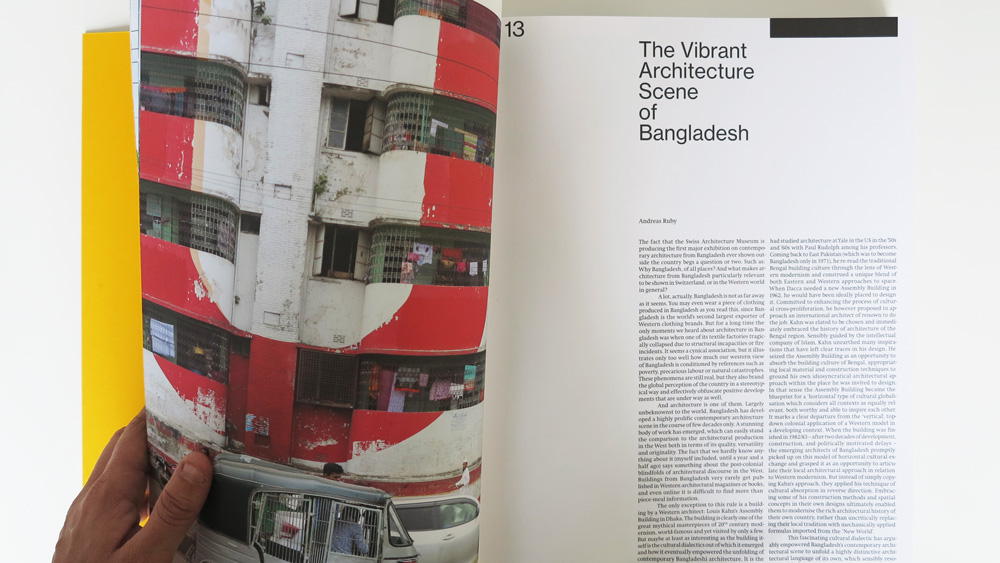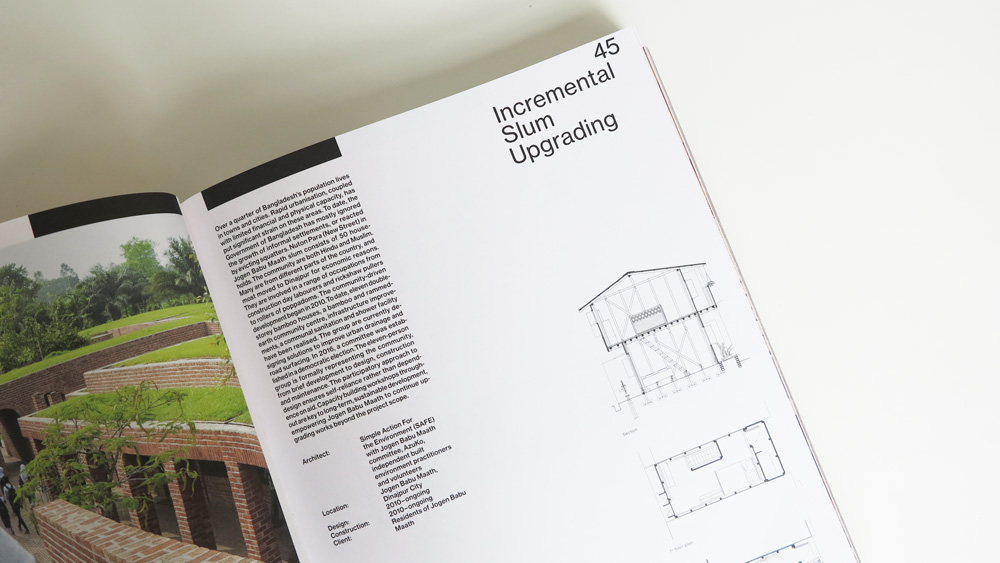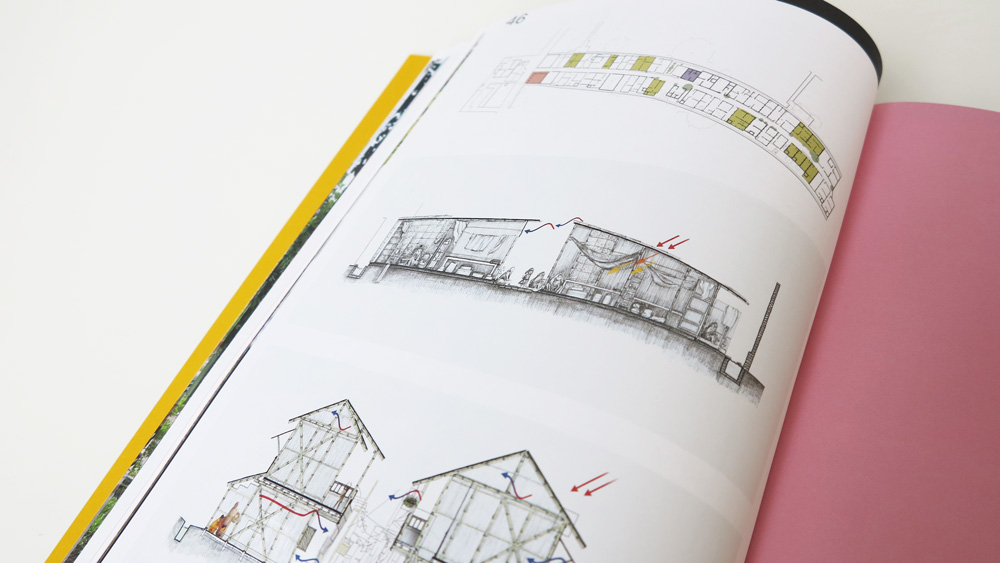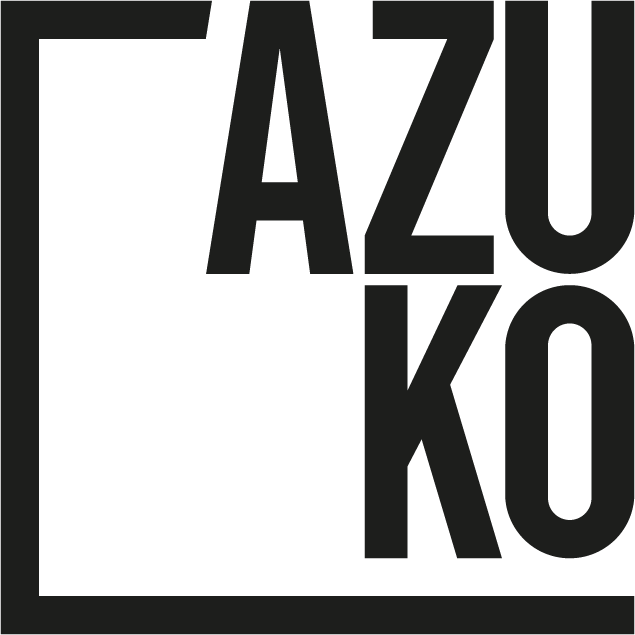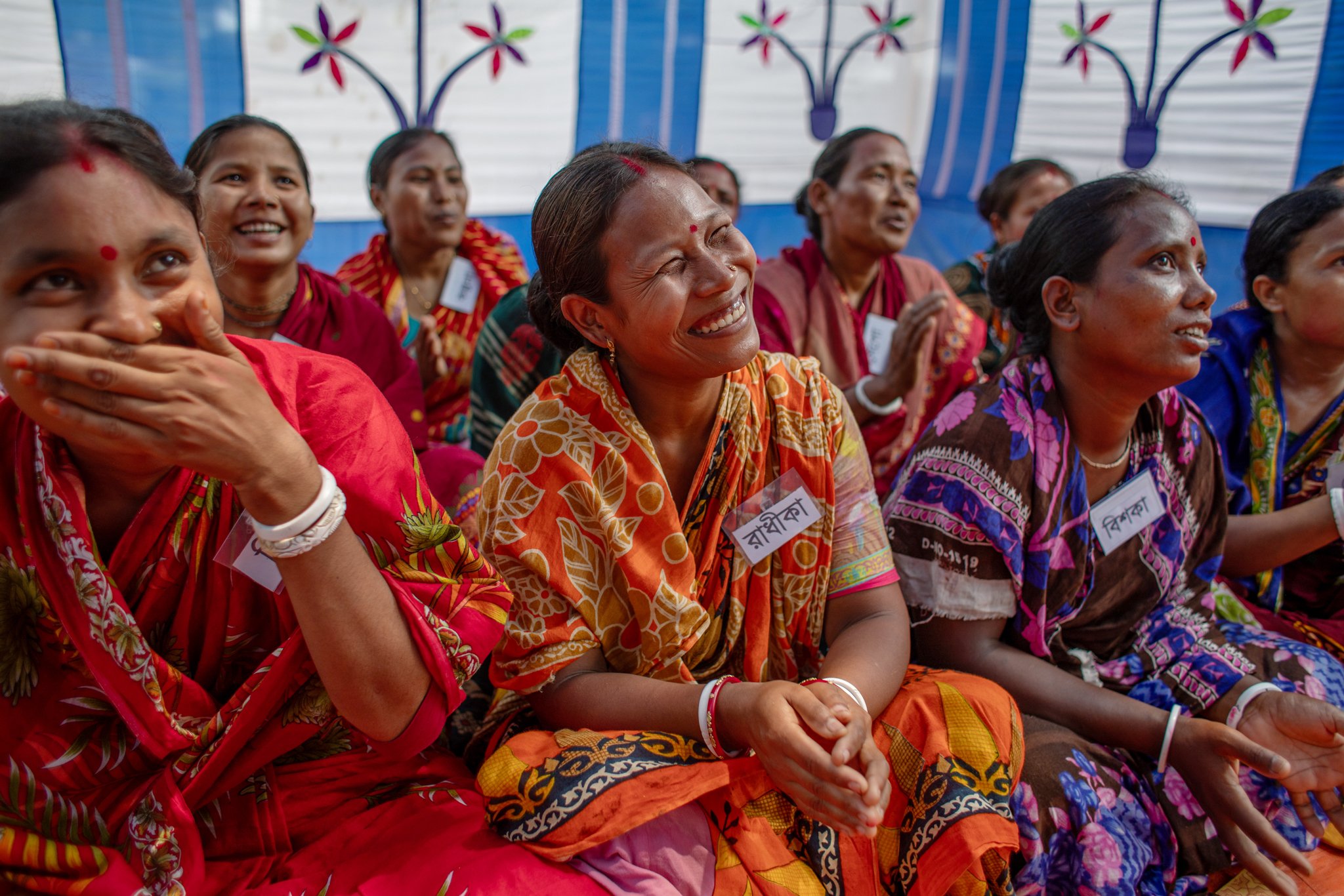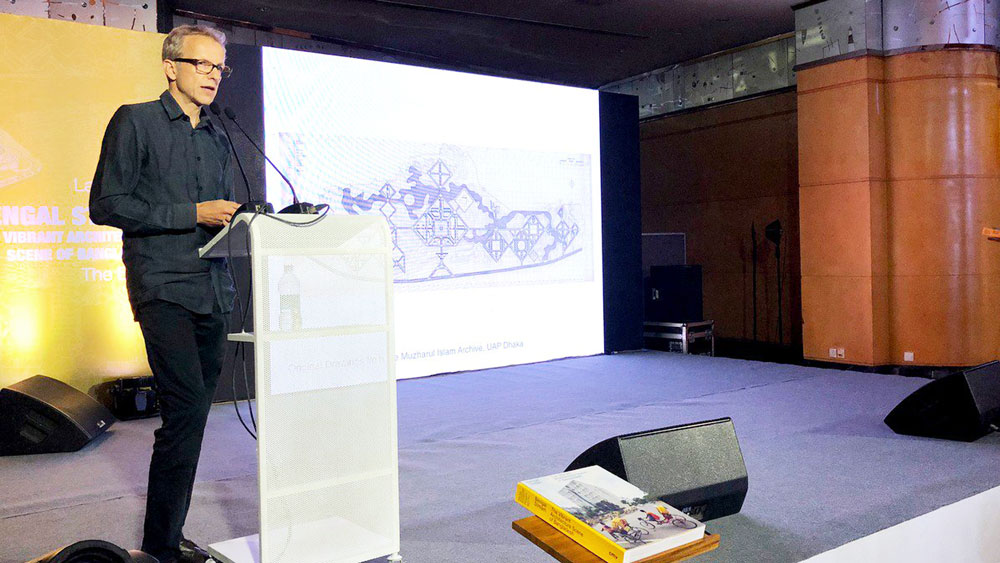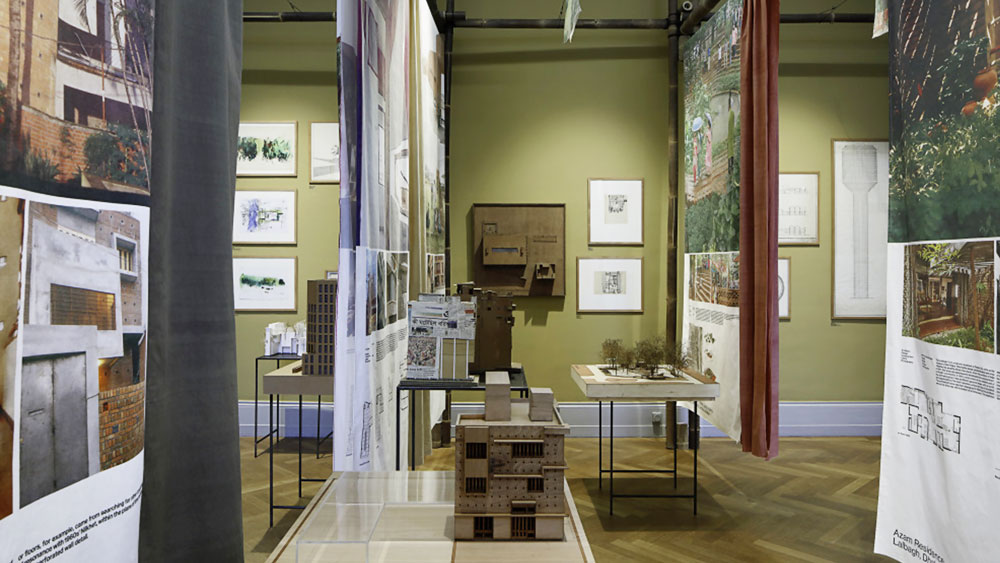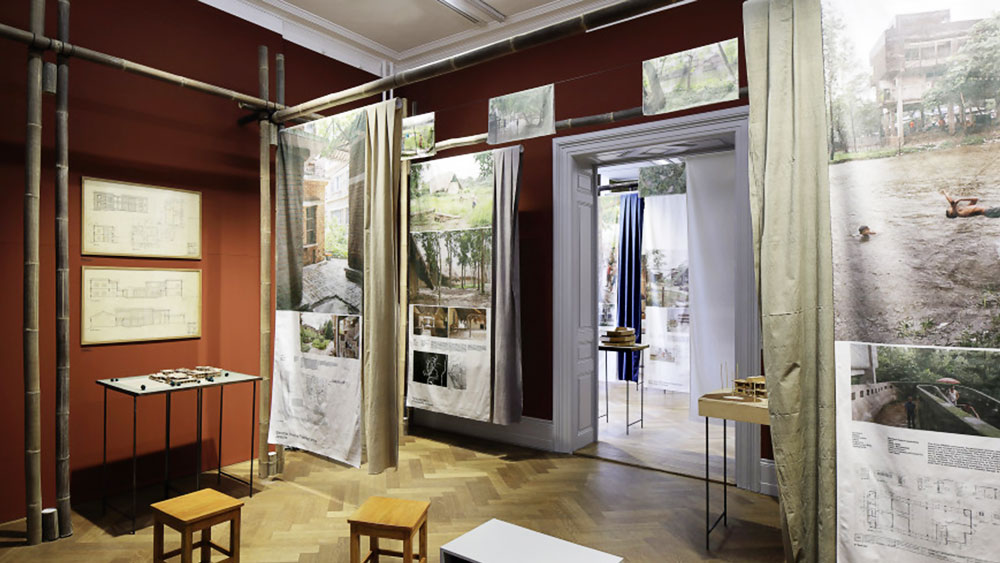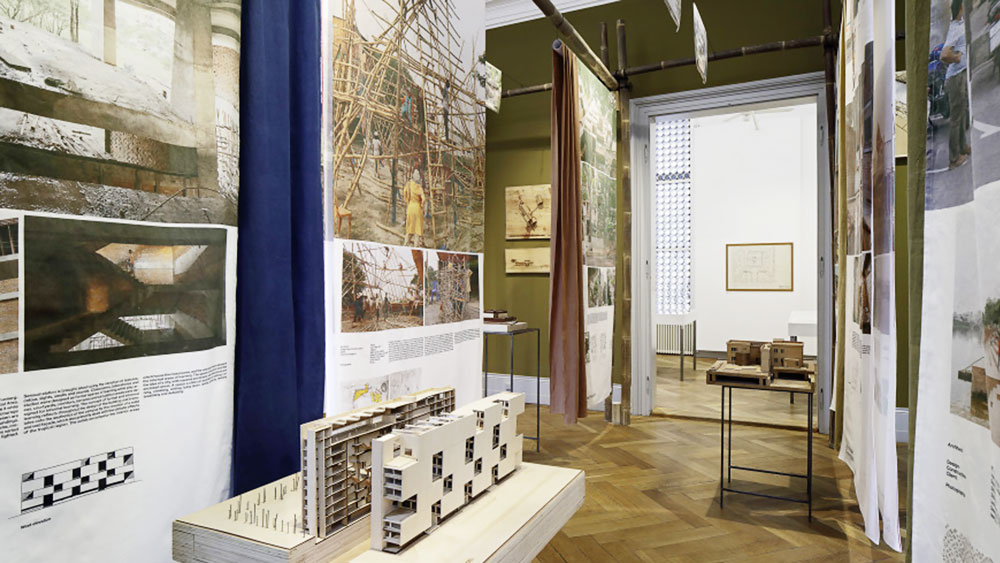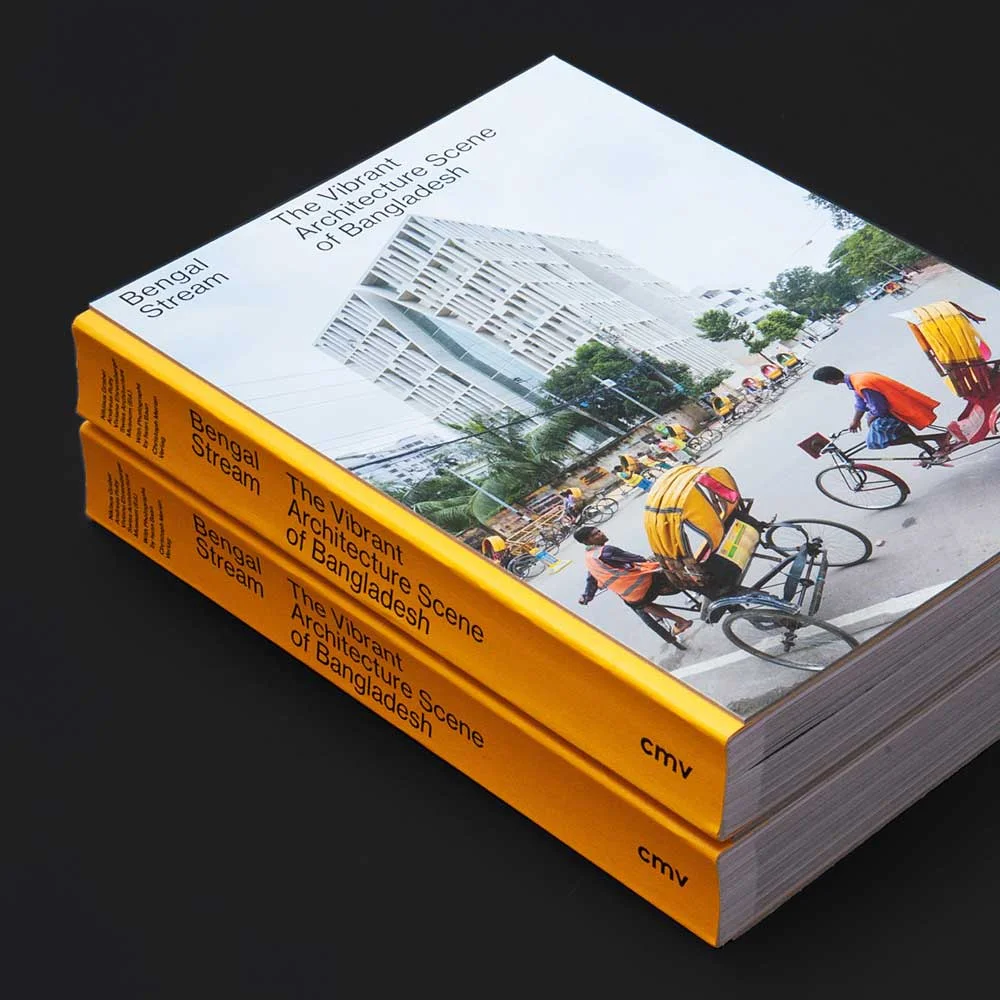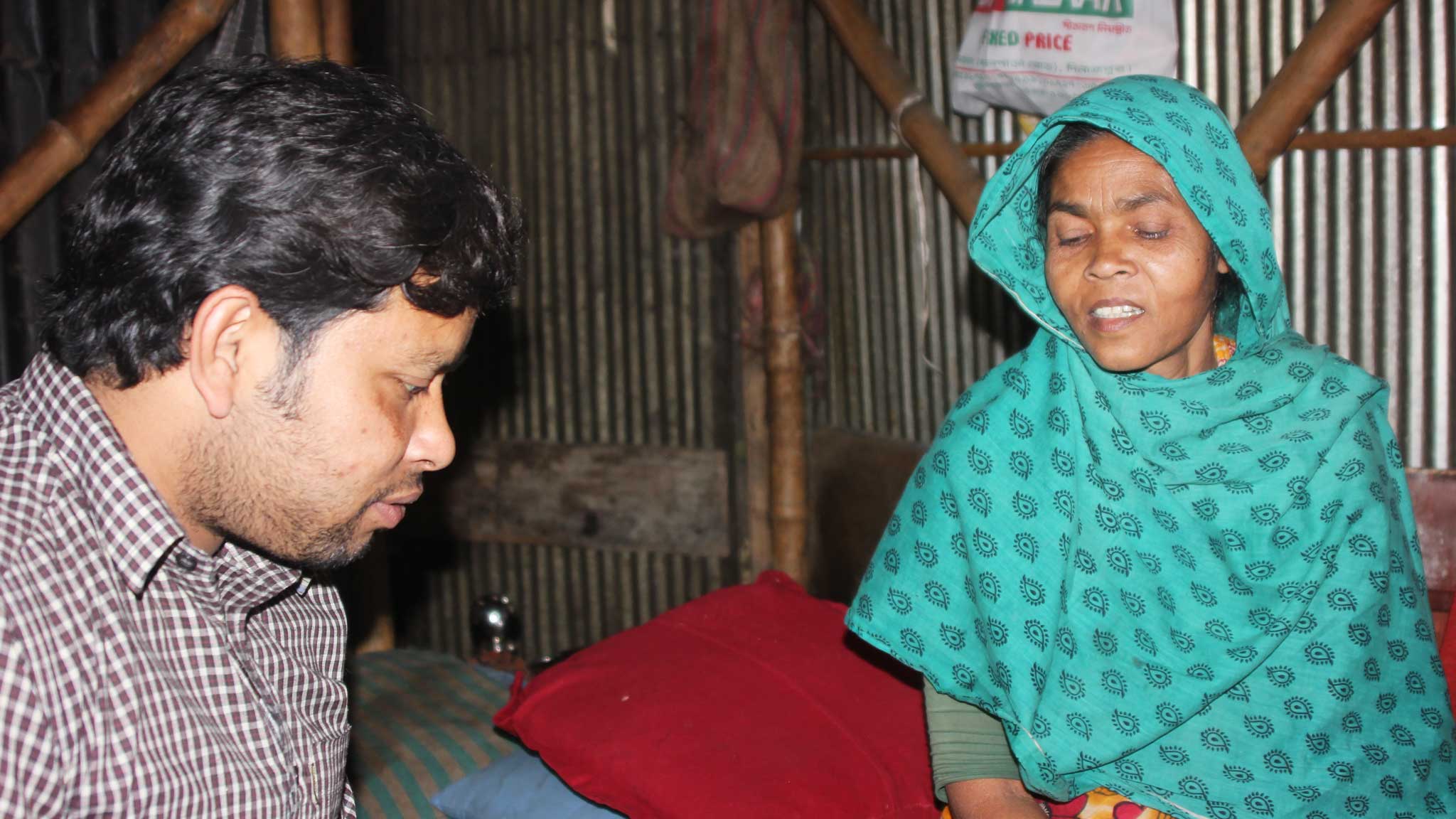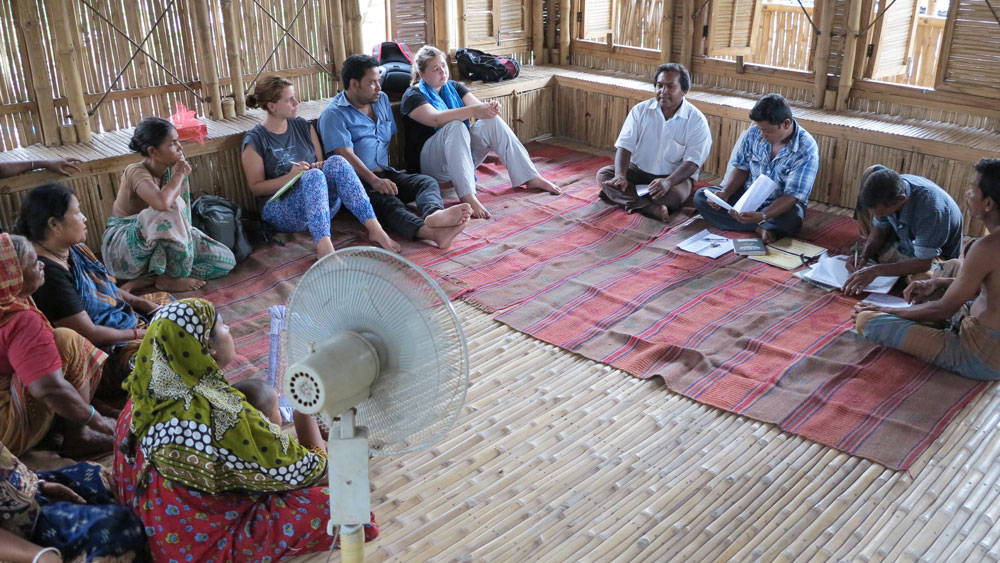Our work with the community of Jogen Babu Maath slum is featured in the exhibition ‘Bengal Stream: The Vibrant Architecture Scene of Bangladesh’ which brings together 60 projects by architects in Bangladesh. The travelling exhibition opened at the Swiss Architecture Museum in Basel in 2017, moved to the Centre d'Architecture 'Arc En Rêve' in Bordeaux, France and to the DAM, Deutsches Architekturmuseum in Frankfurt, Germany. On 9th December 2022, Bengal Stream will reach its home country and open at Bengal Shilpalay in Dhaka, Bangladesh.
We're proud to feature alongside notable works including the Friendship Centre in Gaibandha, floating Arcadia School near Savar, the award winning Bait Ur Rouf Mosque in Dhaka and Ashar Macha Platform of Hope in Karail slum.
(Photos courtesy of S AM Basel)
Incremental slum upgrading
Community-led development began in 2010. To date, 11 double-storey bamboo houses, a bamboo and rammed earth community centre, infrastructure improvements and a communal sanitation and shower facility have been realised. In 2016, a committee was established through a democratic election. The group is formally representing JBM, from design and construction to maintenance.
The works have been supported by local nonprofit, Simple Action For the Environment (SAFE), AzuKo, independent built environment practitioners and local and international volunteers.
Learn more about the work:
The publication
The Bengal Stream publication, which accompanies the exhibition is available to purchase
